The overall length of the colon is 150cms (about 5 feet), and is about 1/5 the length of the small bowel. On average itsdiameter is about 5cms. which is about twice the diameter of the small bowel. It is widest regions are located in the cecum, sigmoid and rectum, while its narrowest diamter is found in the descending colon which when empty simulates the size of the small bowel. The size varies significantly based on functional state and contents.
Applied Anatomy
When is the colon too large?
There is a significant difference in clinical implications between an enlarged colon that is an acute presentation and one in which it is chronic. The colon can accomodate large volumes of stool if this is a slow chronic process whereas if it is acute, the blood flow can be compromised, which may be complicated by ischemia and infarction with subsequent rupture. Spillage of stool into the abdominal cavity is tantamount to bacterial warfare and is an extermely serious and often fatal entity.
The acute entities include large bowel obstruction, cecal and sigmoid volvulus, and Ogilvie’s syndrome which is a colonic ileus, and toxic megacolon. These will be discussed in further detail in the sections below. The chronic forms of megacolon and megarectum are seen in institutionalised patients and quadriplegic patients and other patients who have neurologic deficit to the colon. Hirshsprungs disease is a congenital absence of nerves ina segment of the bowel wall which results in a functional obstruction.
The actual measurements that define an enlarged colon have to used with caution since there is such variability in size between tpatients. As a general rule the following sizes are concerning;
a cecum that is larger than 12cms, an ascending colon larger than 8cms, and a rectosigmoid that is greater than 6.5cms.
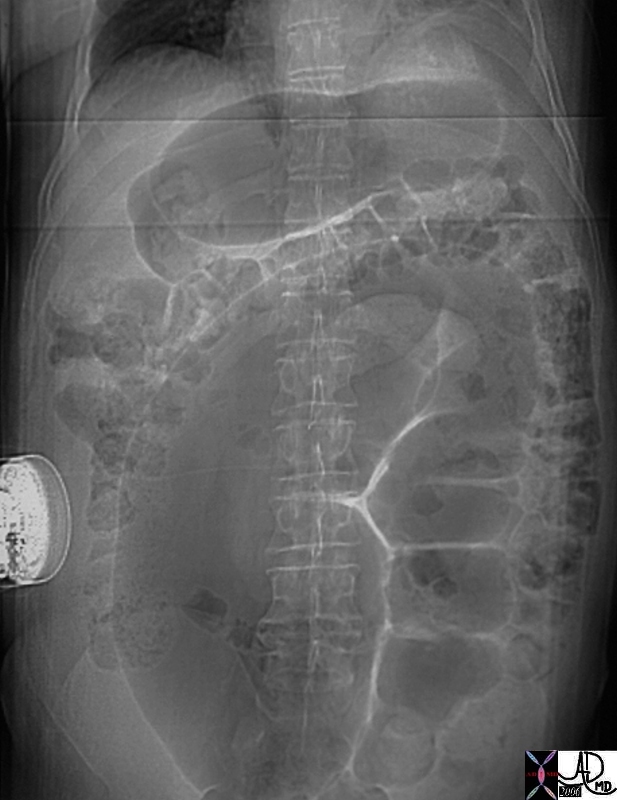 Chronic megacolon Chronic megacolon |
| This plain film is from an asymptomatic institutionalized patient. Talking about an organ that jumps out at you from the film – diagnosis – chronic megacolon. Previous films over a few years had shown similar appearance in this asymptomatic patient (aside from chronic abdominal distension) and hence sigmoid volvulus was not a clinical consideration.
Courtesy Ashley Davidoff MD 16667 |
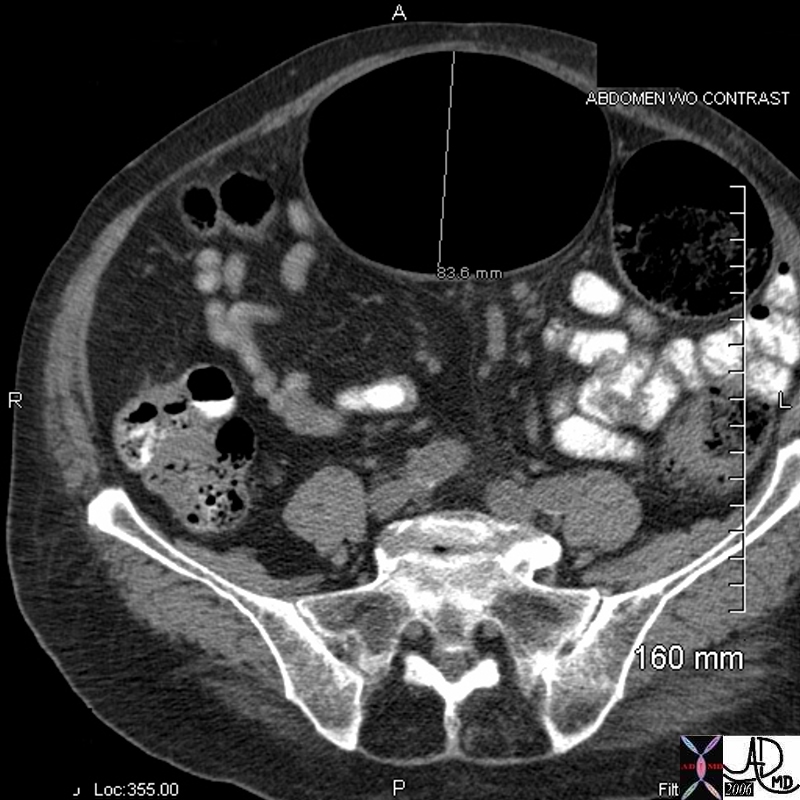 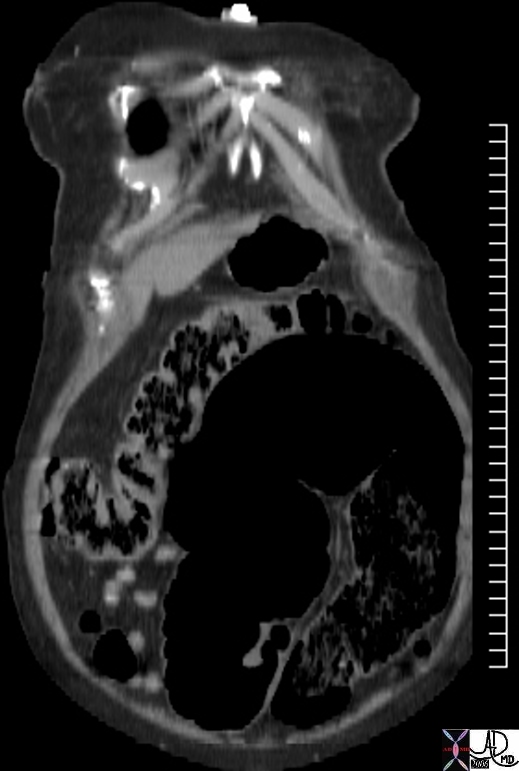 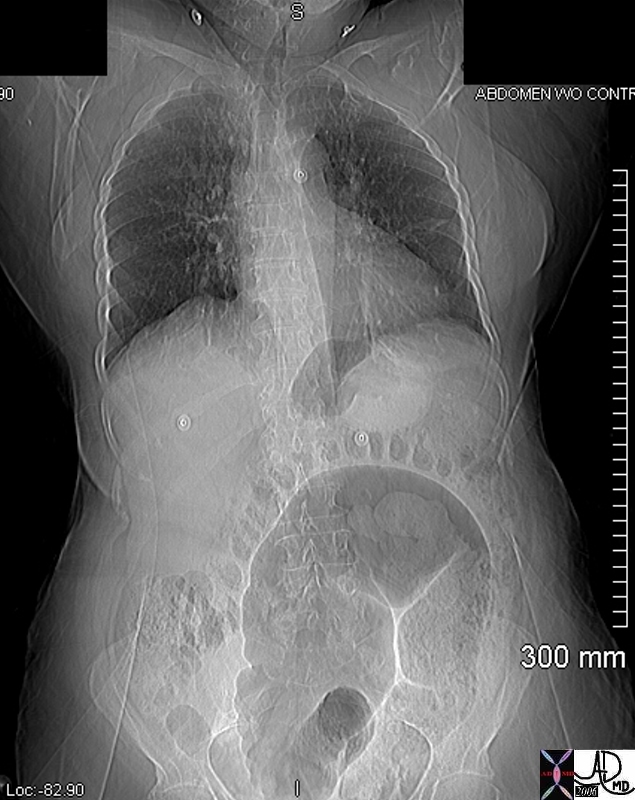 Sigmoid megacolon Sigmoid megacolon |
| A CT performed shows that the sigmoid measured 8.3cms in diameter and was filled with air.
Courtesy Ashley Davidoff MD 45450 45451 45454 |
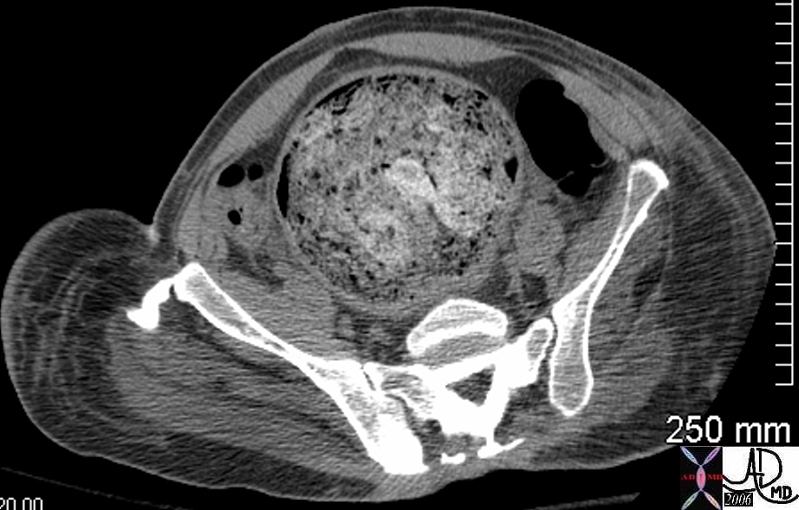 Sigmoid and rectal impaction with megacolon and no obstruction Sigmoid and rectal impaction with megacolon and no obstruction |
| In this case there is impaction of feces in the sigmoid colon and rectum but there is no evidence of obstruction since the rest of the colon is not dilated. These findings were of a chronic nature and unchanged. A diagnosis of chronic megacolon is likely.
Courtesy Ashley Davidoff MD 45461 45462 45464 |
Although it is rather surprising that the patient above was not obstructed other complications such as stercoral ulcers due to chronic irritation of the feces on the mucosa, and bowel ischemia from vascular compromise must be considered in the appropriate clinical setting.
